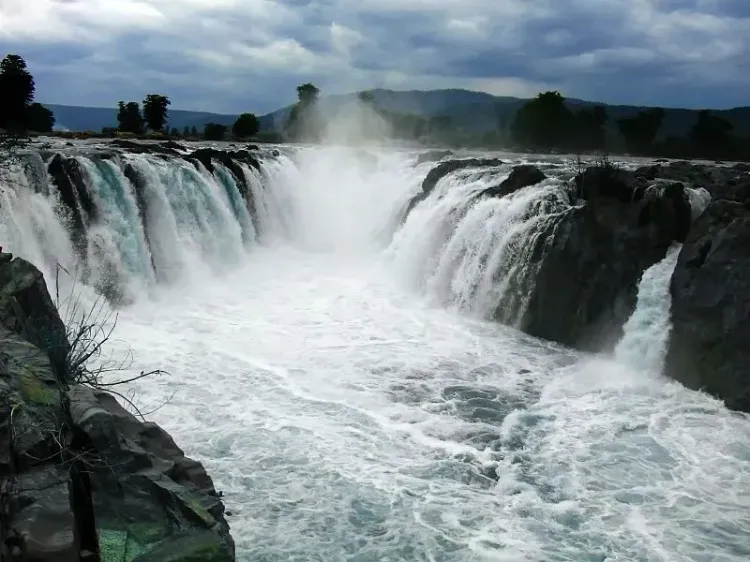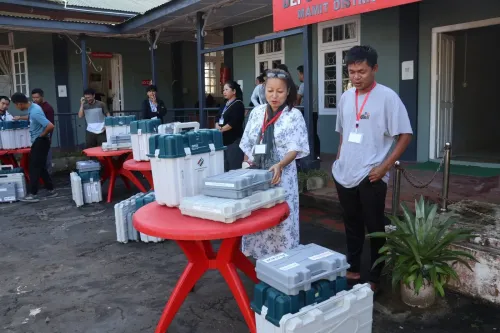Has the Hogenakkal Water Flow Increased by 1000 Cusecs After Recent Heavy Rains?

Synopsis
Key Takeaways
- Water flow surged by 1,000 cusecs.
- Continuous rainfall boosted inflow.
- Increased tourist activity at Hogenakkal.
- Local economies benefit from tourism.
- Safety measures in place for visitors.
Chennai, May 17 (NationPress) The water flow to the Hogenakkal falls has experienced a remarkable surge of 1,000 cubic feet per second (cusecs) as a result of persistent rainfall in the catchment regions, including Pilikundulu, over the last few days.
Officials from the Tamil Nadu Water Resources Department have reported that the rainfall in areas upstream of the Cauvery River has substantially increased inflow to this popular tourist attraction located on the border of Tamil Nadu and Karnataka.
As of Saturday morning, the water flow at Hogenakkal rose from 5,000 to 6,000 cusecs. This significant rise is attributed to the heavy rains in Pilikundulu and surrounding catchment areas, resulting in a noticeable boost in water discharge into the Cauvery River.
With the water levels improving, tourists flocked to Hogenakkal to enjoy coracle rides along the Cauvery River and revel in the stunning waterfalls, which were flowing spectacularly.
Local authorities noted an increase in tourist numbers as visitors capitalized on the favorable weather and river conditions over the weekend.
Officials from the Central Water Resources Department (WRD) are vigilantly monitoring the situation, particularly at Pilikundulu, which serves as a crucial measuring point for river inflows at the Tamil Nadu–Karnataka border.
The department confirmed ongoing tracking of water levels to ensure safety and efficient water management downstream.
Meanwhile, tourism operators and local vendors are optimistic as the surge in river flow has revitalized tourist activity, which had diminished during the dry spell.
Security personnel and safety teams have been stationed around the bathing and boating areas to avert accidents, especially due to the strong current in specific sections of the river.
Hogenakkal, often referred to as the “Niagara of India,” heavily depends on seasonal rains to maintain its flow. The recent rainfall has not only enhanced the falls' natural beauty but has also provided relief to local communities reliant on tourism and river-based livelihoods.









